Utility Grade Beef Ribeye, Safe to Buy?
Utility grade ribeye may seem like a budget-friendly option, but is it worth it? Probably not. Discover my firsthand experience, cooking tips, and alternate uses for this "unique meat."
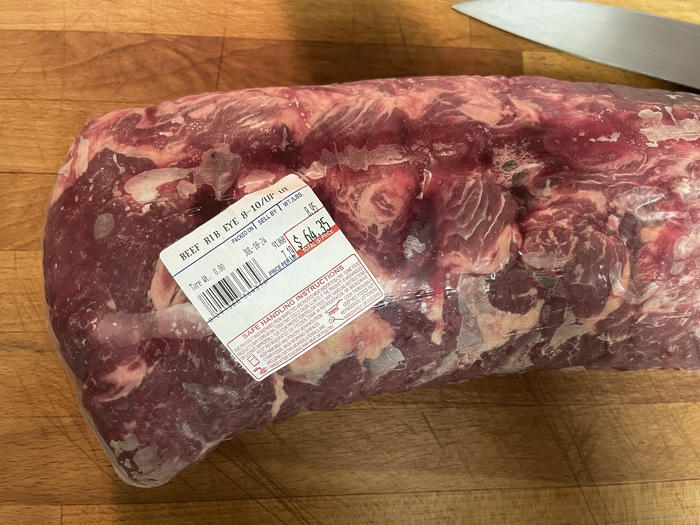
When it comes to scoring deals on groceries, restaurant supply stores can be a treasure trove of bargains. One such store, Metro Chef, offers wholesale-level pricing on produce and meat without requiring a membership. On a recent visit, I stumbled upon a Utility grade ribeye roll priced at just $7.19 per pound. The roll weighed just under 9 pounds, costing me $64.35. For science (and the promise of cheap steaks), I decided to give it a try. Spoiler alert: It didn't go as planned.
What Is Utility Grade Beef?
Utility grade beef is one of the lower USDA beef grades. It comes from older cattle and lacks the marbling seen in higher grades like Select, Choice, or Prime. Utility grade beef is typically used for processed products such as ground beef or canned meat. It's rare to find it sold as whole cuts, which immediately piqued my curiosity. Could this be a hidden gem for thrifty steak lovers?
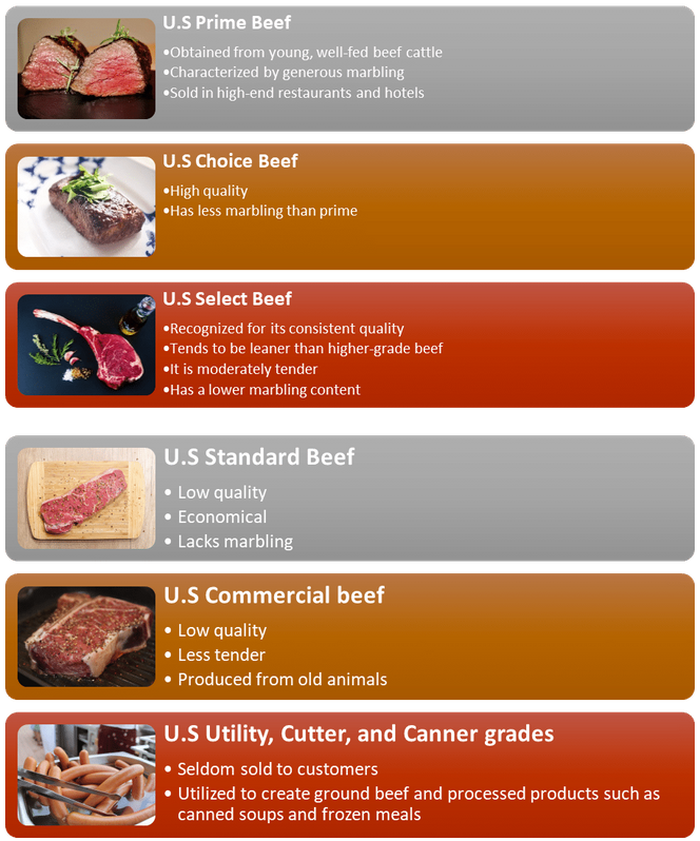
The Ribeye Roll Experiment
Upon bringing the ribeye roll home, I opened the packaging and was greeted with an overwhelming sulfur smell. It wasn't a subtle aroma, it hit like a freight train. This wasn't the first time I'd dealt with off-putting smells in meat, so I thought it might dissipate. I sliced the roll into 14 thinner steaks, seasoned them with salt and pepper, and left them to "air out" in the fridge. Unfortunately, the smell persisted.
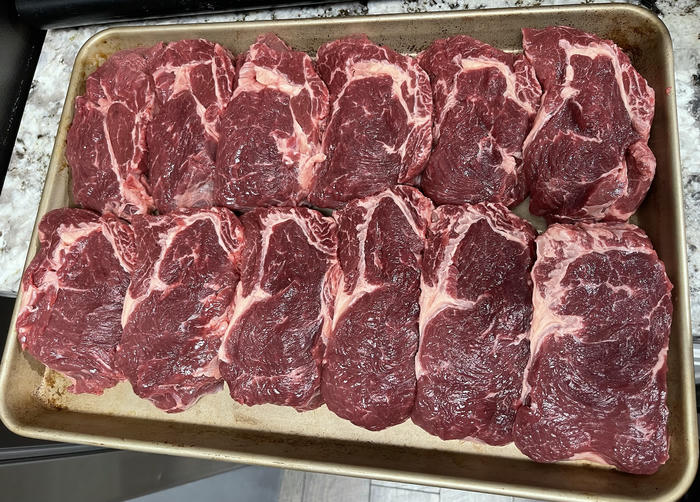
Why the Sulfur Smell? Through some research, I discovered that sulfur smells in meat can result from a few causes:
- Aging Process: Improper or extended wet aging can lead to sulfurous compounds forming in the meat juices.
- Packaging: Vacuum-sealed meats can sometimes trap gases from bacterial activity, creating off-odors. Normally, this dissipates after exposure to air, but in my case, it didn't.
- Quality of Meat: Utility grade beef often comes from older or less desirable cattle, which may contribute to off smells and flavors.
Cooking Utility Grade Ribeye
Despite the sulfur smell, I pressed forward with my experiment. I vacuum-sealed the steaks in pairs for later sous vide preparation. For my first test, I cooked a set at 128°F (medium-rare) for two hours, followed by a sear using a propane torch. The result? Edible, but far from enjoyable. The sulfur taste lingered faintly, accompanied by other odd flavors that just didn't sit well with my palate.
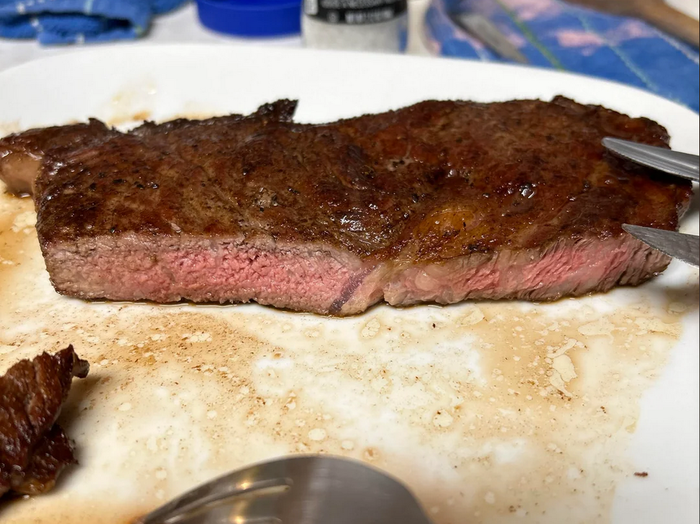
However, all is not lost with Utility grade beef, it's just not ideal for standalone steaks. If you've already bought it or are curious about using it, there are a few alternate ways to get better results from this lower-quality cut. Here's how to make the most of Utility grade beef:
- Philly Cheesesteaks
Thinly slicing the ribeye and using it in a heavily seasoned dish like a Philly cheesesteak can mask the odd flavors. The combination of grilled onions, melted cheese, and hoagie bread does wonders for transforming mediocre beef into a savory sandwich experience. - Carne Asada
Utility grade beef can benefit greatly from a long marinade. For carne asada, marinate the steaks in a mixture of citrus juice, garlic, cumin, and chili powder for several hours or overnight. This helps tenderize the meat and infuse it with bold flavors, making it a much better option for tacos, fajitas, or burritos. - Beef Jerky
Since the meat's flavor and texture aren't ideal for steaks, consider slicing it thin and making beef jerky. The drying and seasoning process involved in jerky-making will help neutralize any off-flavors and create a chewy, snackable result. A spicy or sweet marinade can work wonders here. - Stir-Fry
Cutting the ribeye into small strips and using it in a stir-fry is another way to make the most of Utility grade beef. With a strong sauce (like soy sauce, garlic, ginger, and sesame oil), the beef's imperfections become less noticeable amidst the vegetables and noodles. - Chili or Stew
Utility grade beef works well in slow-cooked dishes like chili or stew, where it will absorb the flavors of the other ingredients. After a few hours in the slow cooker or Instant Pot, the meat becomes tender, and any off-tastes are buried under layers of spices, beans, and tomatoes. - Ground Beef for Burgers, Tacos or Meatballs
If the steaks are too tough or off-flavored to eat as is, you can always grind them into burger patties or meatballs. Adding seasonings, breadcrumbs, and sauces will make the beef far more palatable, especially when paired with flavorful toppings or sauces.
By using Utility grade ribeye in dishes where it's sliced thin, heavily marinated, or cooked with other bold flavors, you can salvage what might otherwise be an unpleasant cut of meat. If you're set on using it for steaks, sous vide cooking can help make the texture more tender, but be prepared for the strong, distinct flavors to stick around.
This approach makes it easier to deal with a cut like Utility grade ribeye, giving you a variety of options to ensure you're not stuck with 14 subpar steaks!
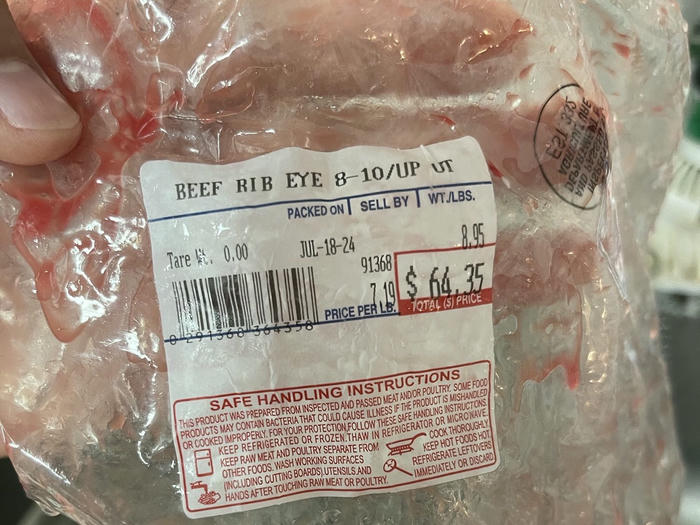
Lessons Learned
- Quality Over Quantity: While $7.19 per pound seemed like a steal, the quality of the meat didn't justify the cost. I would have much preferred to pay a few dollars more for Choice grade beef.
- Utility Grade Isn't for Steaks: Utility grade beef is better suited for processed or heavily seasoned dishes where its shortcomings can be masked. It's not ideal for standalone cuts like steaks.
- Smell Is a Red Flag: If meat has an off smell that doesn't dissipate after airing out, proceed with caution. While not necessarily unsafe, it may not be enjoyable to eat.
- Experimentation Is Valuable: Though this wasn't the culinary discovery I hoped for, it was a valuable lesson in understanding USDA grades and what to avoid in the future.
Would I Recommend Utility Grade Beef?
In short, no. Maybe I got a bad batch, but the overpowering sulfur smell and lackluster taste made it difficult to enjoy. At $7.19 per pound, it wasn't worth the savings compared to higher-quality beef. If you're buying steaks, stick with Select or Choice grade at the very least. If you're tempted to try Utility grade beef for its low price, proceed with caution. It's a gamble that might leave you regretting the purchase, and forcing yourself to eat 14 subpar steaks. Trust me, I learned the hard way. Stick to higher grades when it comes to standalone cuts like ribeye. Sometimes, paying a little extra makes all the difference.









